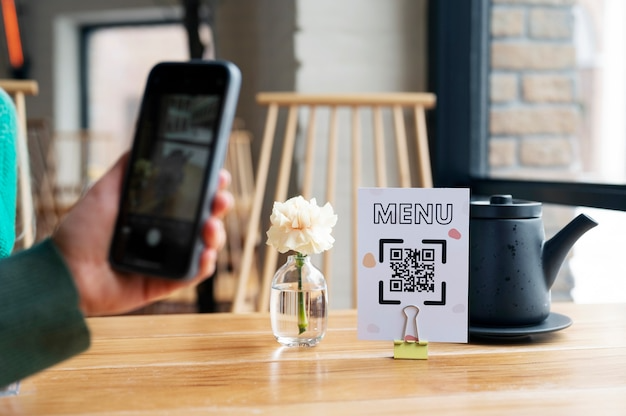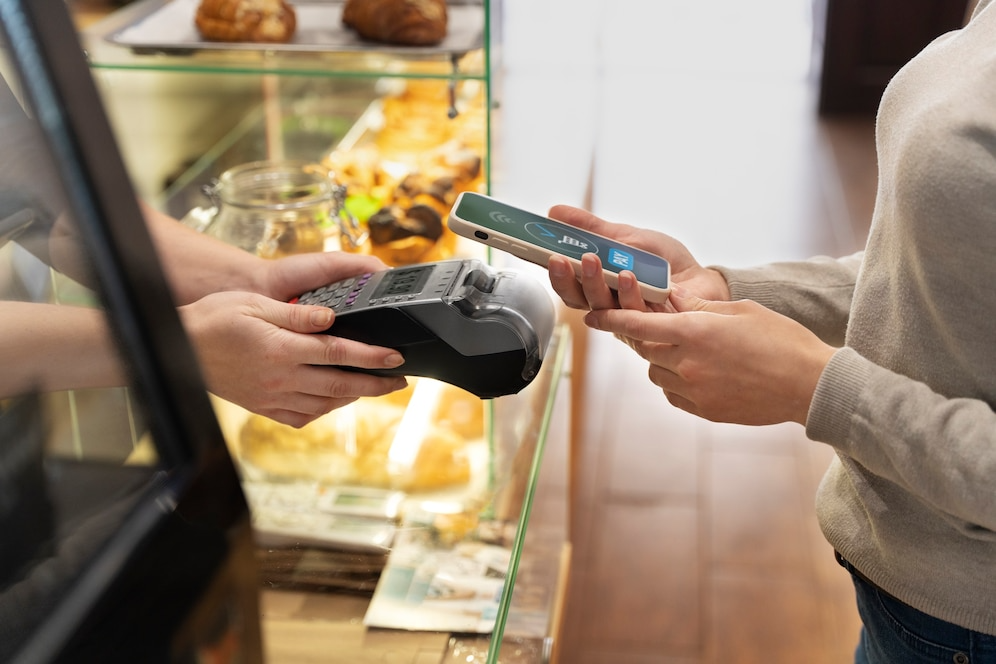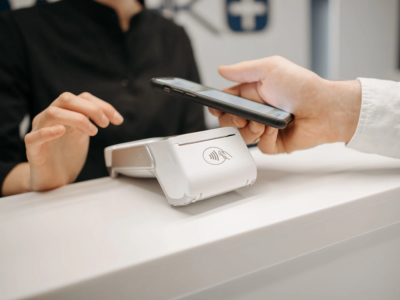Introduction
In today’s digital age, businesses are constantly seeking innovative ways to enhance the customer experience and provide seamless interactions. QR codes have emerged as a versatile tool that can greatly improve customer engagement and satisfaction. This article explores how businesses can leverage QR codes to enhance the customer experience, streamline processes, and deliver personalized offerings. In this article, we will explore ‘QR codes for customer experience enhancement’.
Understanding QR Codes
QR codes, or Quick Response codes, are two-dimensional barcodes that can be scanned using a smartphone or QR code reader. These codes can store various types of information, such as website URLs, product details, contact information, or promotional offers. QR codes have become increasingly popular due to their ease of use and ability to bridge the gap between offline and online experiences.
Enhancing Customer Experience with QR Codes
Seamless Access to Information:
QR codes allow customers to quickly access information about products, services, or promotions by scanning the code with their smartphones. This eliminates the need for manual searching and provides instant access to relevant details.
Streamlined Purchasing Process:
QR codes can simplify the purchasing process by directing customers to mobile payment platforms or online order forms. By scanning the code, customers can easily complete transactions, reducing friction and enhancing convenience.
Personalized Offers and Loyalty Programs:
QR codes enable businesses to deliver personalized offers, discounts, or loyalty program benefits directly to customers’ smartphones. This creates a sense of exclusivity and encourages repeat business.
Interactive and Engaging Experiences:
QR codes can unlock interactive and engaging experiences for customers. For example, scanning a QR code could provide access to virtual product demonstrations, immersive storytelling, or augmented reality experiences, enhancing customer engagement and leaving a lasting impression.
Feedback and Customer Surveys:
QR codes can serve as a gateway for customers to provide feedback or participate in surveys. By scanning a QR code, customers can share their opinions, suggestions, or ratings, allowing businesses to gather valuable insights and improve their offerings.
Implementing QR Codes for Customer Experience

To effectively implement QR codes and enhance the customer experience, businesses should consider the following steps:
Creating Relevant QR Code Content:
Ensure that the information or offers presented through QR codes are relevant, valuable, and aligned with the customer’s journey. Tailor the content to address specific pain points or provide solutions.
Designing User-Friendly QR Codes:
Use visually appealing QR code designs that are easily scannable. Consider incorporating branding elements to maintain consistency and reinforce brand recognition.
Promoting QR Codes:
Display QR codes prominently in physical locations, such as product packaging, store signage, or marketing materials. Utilize digital channels, such as websites, social media, or email campaigns, to encourage customers to scan the codes.
Tracking and Analyzing QR Code Usage:
Implement tracking mechanisms to monitor the usage and effectiveness of QR codes. Analyze data, such as scan rates, user demographics, and conversion rates. To gain insights and make data-driven improvements.
Best Practices for Using QR Codes for Customer Experience
To maximize the benefits of using QR codes for customer experience, businesses should follow these best practices:

Provide Clear Instructions:
Include clear instructions near the QR codes to guide customers on how to scan them effectively. Use concise and easy-to-understand language to ensure a smooth user experience.
Ensure Mobile-Friendly Experiences:
Ensure that the landing pages or websites users are directed to after scanning the QR codes are mobile-friendly, and optimized for a seamless mobile browsing experience.
Tailor QR Code Placement:
Place QR codes in strategic locations where they are easily visible and accessible to customers. Consider factors such as customer flow, context, and the intended action after scanning.
Test and Optimize:
Continuously test and optimize QR code campaigns to improve their performance. Experiment with different designs, placement strategies, and content to find the most effective approach.
Use Cases of QR Codes for Customer Experience Enhancement
Product Information and Reviews:
QR codes placed on product packaging can provide customers with detailed information about the product, including reviews, ratings, and usage instructions.
Mobile Payments:
QR codes can facilitate seamless mobile payments by linking to digital wallets or payment gateways, eliminating the need for physical cash or credit cards.
Digital Loyalty Programs:
QR codes can be used to enroll customers in loyalty programs, track their purchases, and provide personalized rewards and discounts.
Interactive Marketing Campaigns:
QR codes in advertisements or promotional materials can engage customers with interactive experiences such as games, contests, or exclusive offers.
Integrating QR Codes with Marketing Campaigns
QR codes can be a powerful tool to enhance marketing campaigns. By linking QR codes to promotional content, businesses can engage customers with exclusive offers, product demonstrations, or interactive experiences. Additionally, QR codes can be integrated with email marketing, social media, or print advertisements to drive traffic to digital assets and measure campaign effectiveness.
Implementing QR Codes in Physical and Digital Touchpoints
To maximize the impact of QR codes, businesses should consider implementing them across various touchpoints. This includes product packaging, in-store signage, digital advertisements, business cards, email signatures, and social media profiles. By strategically placing QR codes, businesses can create a seamless customer journey that seamlessly transitions between physical and digital channels.
Enhancing Customer Experience with Personalized QR Codes
Personalization is key to creating memorable customer experiences. With QR codes, businesses can create personalized experiences by directing customers to tailored landing pages, offering customized discounts, or providing personalized recommendations based on past interactions. By leveraging customer data and preferences, businesses can enhance engagement, loyalty, and overall satisfaction.
QR Codes in E-commerce and Retail
In the e-commerce and retail sectors, QR codes have revolutionized the way customers interact with products and brands. QR codes on product packaging enable customers to access additional product information, reviews, or related products with a simple scan. Additionally, QR codes can facilitate contactless payments, order tracking, and personalized offers, enhancing the overall shopping experience.
QR Codes in Hospitality and Travel
The hospitality and travel industry can greatly benefit from QR code implementation. Hotels can use QR codes for contactless check-ins, access to digital room keys, or provide local recommendations. In the travel sector, QR codes can be used for e-tickets, boarding passes, and providing tourists with information about attractions, restaurants, or transportation options.
QR Codes in Restaurants and Food Services
Restaurants and food services can leverage QR codes to streamline operations and enhance customer experiences. QR codes on menus can provide detailed nutritional information, allergen warnings, or enable customers to place orders directly from their smartphones. QR codes can also facilitate contactless payments, loyalty program enrollment, or access to exclusive recipes or discounts.
FAQs About QR Codes for customer experience enhancement
What is the purpose of QR codes for customer experience enhancement?
QR codes enhance the customer experience by providing quick access to information, streamlining processes, offering personalized benefits, and facilitating interactive experiences.
How can QR codes streamline the purchasing process by QR codes for customer experience enhancement?
QR codes can streamline the purchasing process by directing customers to mobile payment platforms or online order forms, eliminating the need for manual input and reducing friction.
Can QR codes be used to deliver personalized offers and loyalty programs?
Yes, businesses can use QR codes to deliver personalized offers, discounts, and loyalty program benefits directly to customers’ smartphones, creating a sense of exclusivity and incentivizing repeat business.
Can QR codes be used to deliver personalized offers and loyalty programs?
Yes, businesses can use QR codes to deliver personalized offers, discounts, and loyalty program benefits directly to customers’ smartphones, creating a sense of exclusivity and incentivizing repeat business.
What are some best practices for implementing QR codes for customer experience?
Best practices include providing clear instructions, ensuring mobile-friendly experiences, strategically placing QR codes, and continuously testing and optimizing campaigns for improved performance.
How can businesses track and analyze the effectiveness of QR codes?
Businesses can implement tracking mechanisms to monitor scan rates, user demographics, and conversion rates associated with QR codes. This data can provide insights for making data-driven improvements.
Conclusion
QR codes provide a powerful tool for businesses to enhance the customer experience, streamline processes, and deliver personalized interactions. By leveraging QR codes effectively, businesses can create seamless access to information, streamline purchasing, offer personalized benefits, engage customers with interactive experiences, and gather valuable feedback. By following best practices and continually optimizing QR code campaigns, businesses can create memorable customer experiences that drive loyalty and satisfaction











